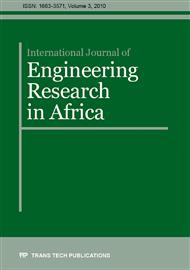p.1
p.18
p.28
p.42
p.49
p.62
p.74
p.84
p.94
Thermochemical Evaluation of Hydroxyl and Peroxyl Radical Precursors in the Formation of Tropospheric Ozone Reactions
Abstract:
The thermochemical properties of varieties of species needed to assess the most prominent pathways of tropospheric ozone transformation have been established. In the troposphere, ozone which is a secondary pollution produced by photochemical induced transformation, acts as an oxidizing agent to numerous atmospheric reactions leading to the formation of particulate matter. Based on the climate related problems resulting from the precursor of particulate matter, it is adequate to establish the feasible routes of ozone formation. In this study, the electronic structure methods which approximate the Schrödinger equation to compute Gibbs free energies and enthalpies of formation of the various chemical species participating in the reactions were used. These thermodynamic properties were determined using four computational model chemistry methods integrated in the Gaussian 03 (G03) chemistry package. Five known reaction pathways for the formation of NO2 (the O3 precursor specie), as well as the dominant ozone formation route from NO2 were examined and their energies determined. Of all the computational methods, the complete basis set (CBS-4M) method produced energies for all species of the five reaction routes. Out of the five routes, only the reactions involving radical species were favoured to completion over a temperature range of -100 and +100oC. The most relevant reaction route for the formation of NO2 and subsequently O3 is that involving the peroxyl acetyl nitrate (PAN) and hydroxyl radicals. Chemical equilibrium analyses of the reaction routes also indicated that reduction in temperature encourages NO2 formation while increase in temperature favours O3 production.
Info:
Periodical:
Pages:
74-83
Citation:
Online since:
November 2010
Authors:
Price:
Сopyright:
© 2010 Trans Tech Publications Ltd. All Rights Reserved
Share:
Citation:


